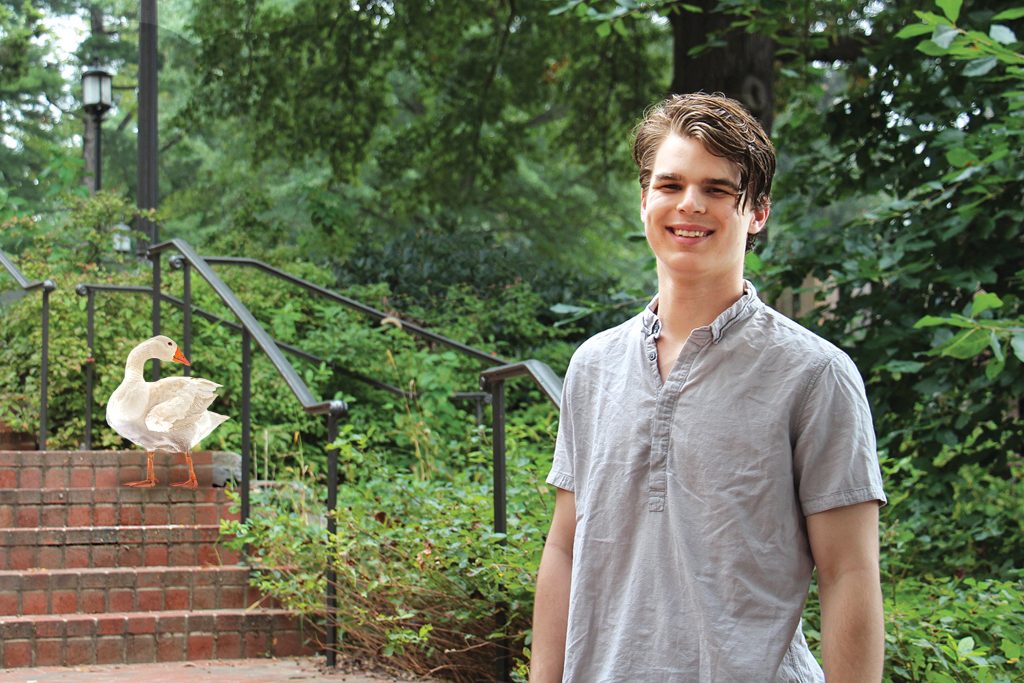
If you see a robot patrolling the Johns Hopkins University Applied Physics Laboratory campus, looking for wild geese and scaring them off, you’ll know that Bijan Varjavand has succeeded.
Last summer as an APL intern, Varjavand was immersed in a project developing deep learning for object detection, such as that used in autonomous vehicles or smart video surveillance. He also used this same technology on a side project: creating a “goosebot,” a robot that would identify and chase away the geese that have inundated parts of the APL campus.
Varjavand, a fourth-year student who is double majoring in materials science and engineering and in applied mathematics and statistics at the Whiting School, joined APL as part of the Research Internships in Science and Engineering program at APL (RISE@APL), which gives undergraduate and graduate students the opportunity to work with APL mentors.
Although his primary focus at APL was related to exploring the relationship between real and synthetic data, he also worked on the goose detection team—“a very prestigious assignment,” he says, laughing. Still, the project had a very worthy and practical goal: to apply deep learning and object detection to a real-world problem. Varjavand says these kinds of applications could have more serious uses, such as identifying skin cancer or scanning a video to identify someone acting suspiciously.
Using images, Varjavand and his team created a data set to train the robot to identify geese and people. They developed a prototype and so far have only tested it out on images. The next step will be to try it out on live geese and people.
“I had a blast doing it,” says Varjavand. After graduating, he plans to pursue an MA in applied mathematics and statistics at Johns Hopkins so that he can understand even more about deep learning models and continue to do this kind of work.




